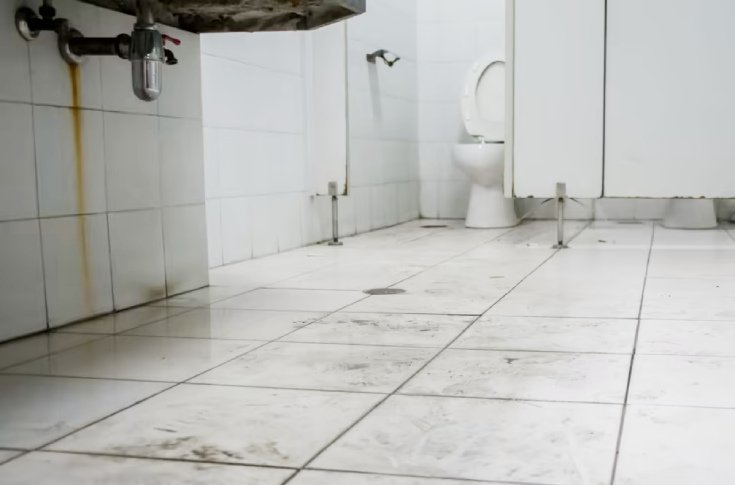Bathrooms are often considered one of the dirtiest areas in our homes, and for good reason. In addition to being used very intensively (5 to 10 times per day on average), they are often exposed to moisture and humidity.
As you probably know, moisture can create an environment conducive to the growth of bacteria, viruses, mould, mildew, and other microorganisms. In addition, moisture increases the level of mobility of most bacteria.
Most People are Quite Sensitive to Bathroom Hygiene
In fact, the growth of microorganisms can not only contribute to a dirty appearance and unpleasant odour, but it can put our health and the health of our family members and friends at risk.
With all of this in mind, it’s hardly a surprise that most people are quite sensitive when it comes to bathroom hygiene.
But there is one very important existential question – where should we start from with maintaining good hygiene in the bathroom?
Your Bathroom is Much More Than Just a Toilet Bowl
Most people always start with cleaning the toilet bowl and this is not bad. The problem is that many other areas remain neglected.
Here we will pay attention to who they are and how they can be cleaned. The areas we should regularly clean are as follow:
- Sink and Faucets;
- Shower (or Bathtub);
- Towel Bars;
- Door Handles;
- Light Switches;
- Toilet Seat.
How to Clean Your Sink and Faucets
To clean the sink and faucet, start by rinsing the sink with water to remove any loose debris.
Then, you need to apply a mild detergent or bathroom cleaner to a soft cloth, and scrub the sink and faucet thoroughly, paying extra attention to any stains or buildup. Rinse with water and dry with a clean cloth to prevent water spots.
How to Clean Your Shower
For cleaning the shower (or bathtub, if you have one), start by spraying the walls, floor, and fixtures with a bathroom cleaner or a mixture of water and vinegar.
Let the cleaner sit for a few minutes to break down the dirt and stains, then scrub the surfaces with a soft brush or sponge. Rinse with water and dry with a clean cloth or towel.
How to Clean Towel Bars and Hooks
To clean towel bars and hooks, you first need to remove the towels and wash them separately.
Then, use a mild detergent or bathroom cleaner to clean the bars and hooks, scrubbing them thoroughly to remove any dirt or grime. Rinse with water and dry with a clean cloth before rehanging the new clean towels.
How to Clean Door Handles
As you probably know, door handles usually have one of the dirtiest surfaces at home.
To clean door handles, dampen a soft cloth or sponge with a mild detergent or bathroom cleaner, and wipe down the handles thoroughly, paying extra attention to any visible dirt or stains. Rinse with water and dry with a clean cloth.
How to Clean Light Switches
To clean light switches, first, turn off the power to avoid any accidents. Then, use a slightly damp cloth or sponge with a mild detergent or bathroom cleaner to wipe down the light switches, being careful not to get any moisture into the electrical components.
How to Clean Toilet Seats
Some people think that using bleach for the toilet seat is a good idea but this is not quite the case.
- 1st: Bleach is a strong chemical that can damage certain materials, such as plastic or painted surfaces. Using bleach on a toilet seat regularly may cause discoloration, fading, or other forms of damage to the surface;
- 2nd: It is assumed that the toilet seat will come into direct contact with the human skin. If absolutely all traces of bleach are not completely removed, this can cause skin burns and irritations, especially for people with sensitive skin.
Instead, it is much better to use a mild detergent for your toilet seat and then to rinse thoroughly. In this case it is much more important to clean the seat on a regular basis to avoid buildup of dirt and germs.
The Absolutely Dirtiest Spot in Your Home
It is time to say a few words about the absolutely dirtiest place in a home – the toilet brush. Cleaning your toilet brush is an important part of maintaining good hygiene in your bathroom.
It is recommended to clean the brush after each use. After you’ve finished cleaning the toilet, rinse the brush thoroughly with clean water to remove any residual cleaner or faecal matter.
Also, you need to sanitise the brush regularly. For this reason you can mix a solution of water and bleach in a ratio of 1:9 (one part bleach to nine parts water) in a bucket or sink.
Submerge the toilet brush head in the solution and let it soak for about 15 minutes. This will help kill any remaining germs and bacteria on the bristles.
After that, you have to rinse the toilet brush thoroughly with clean water to remove the bleach solution and any remaining debris.
Shake off any excess water and place the brush in a well-ventilated area to air dry. It’s important to allow the brush to dry completely before storing it to prevent the growth of mould or mildew.
Don’t forget to also clean the toilet brush holder. Empty any remaining water in the holder and rinse it with clean water.
You can use a non-bleach cleaning solution or a mixture of water and mild detergent to clean the holder, and scrub it thoroughly with a brush or cloth.

My name is Scarlett Mitchell and i am an author and editor in the home topic website – FemCasa.com.
I’m just an enthusiast who wants to share her visions, ideas and advices, when it comes to decorating every part of your home until it becomes the perfect relaxing place for you and your family.

